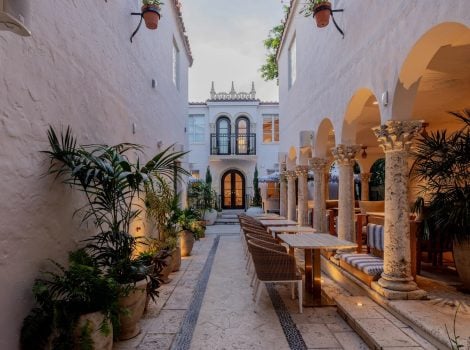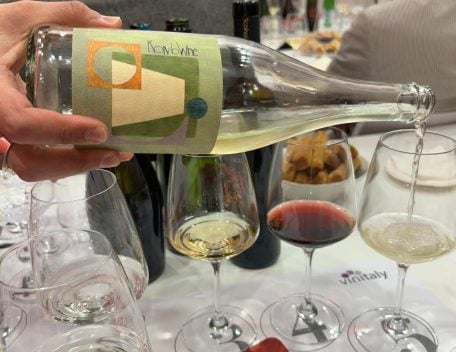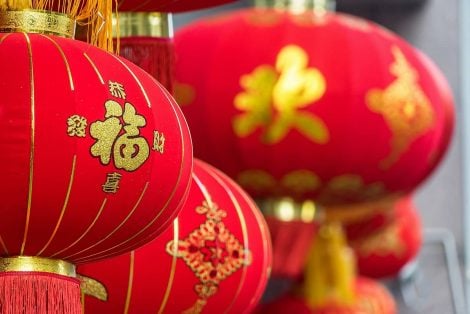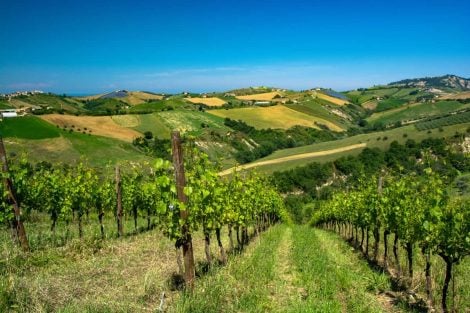When talking about red wine in Abruzzo, we are talking about Montepulciano. The namesake grape from which it is made occupies the majority of the region’s vineyard area, covering 33,000 hectares that stretch from the cooler foothills of the Apennines —under the shadow of Gran Sasso and Majella —down to the Adriatic Sea, with vineyards that nearly touch the coast. More than half of this area is dedicated to Montepulciano (alongside Trebbiano), a true oenological flagship of the region in Italy and worldwide.
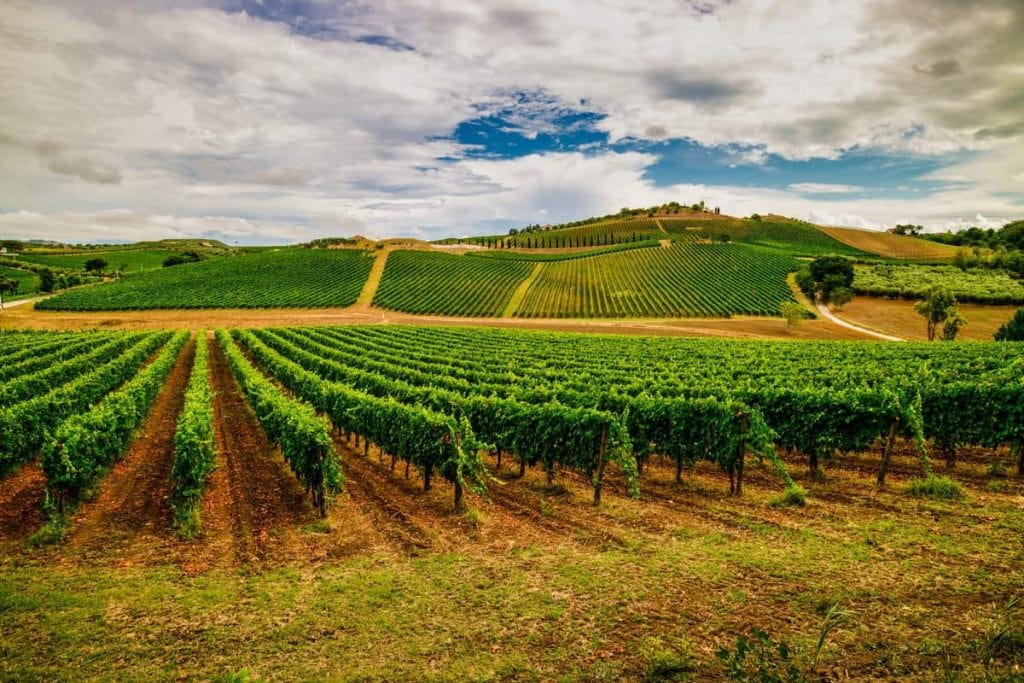
After all, this grape variety originates from this very region. If it had an identity card, under "place of birth" it would say Valle Peligna, in the central-southern part of Abruzzo. From there, it spread to conquer the rest of the region and some neighbouring territories. Montepulciano is, in fact, widely planted in the nearby Marche region (especially in the Piceno and Conero areas) and, to a lesser extent, in Umbria, Lazio, Molise, and Puglia.
The Montepulciano grape: a bit of history
The history of Montepulciano is fascinating, filled with misunderstandings and misinterpretations that, in the past, led to confusion between this Abruzzese grape and another major central Italian black grape variety: Sangiovese. The origin of this mix-up can be traced to Sante Lancerio, the bottler for Pope Paul III (around the mid-1500s), who referred to the wine from the Tuscan town of Montepulciano by that name—despite the fact that it was already being produced from Sangiovese at the time.
This onomastic confusion only grew when Sangiovese began spreading more widely. Today, thanks to genetic studies on grape varieties, these misunderstandings have been resolved. However, without delving into DNA research, the differences between wines made from the two grapes are quite easy to identify. Montepulciano is a very rich, powerful, and generous grape that requires careful handling. When properly managed, it can produce red wines with a gastronomic appeal and an almost infinite ageing potential.
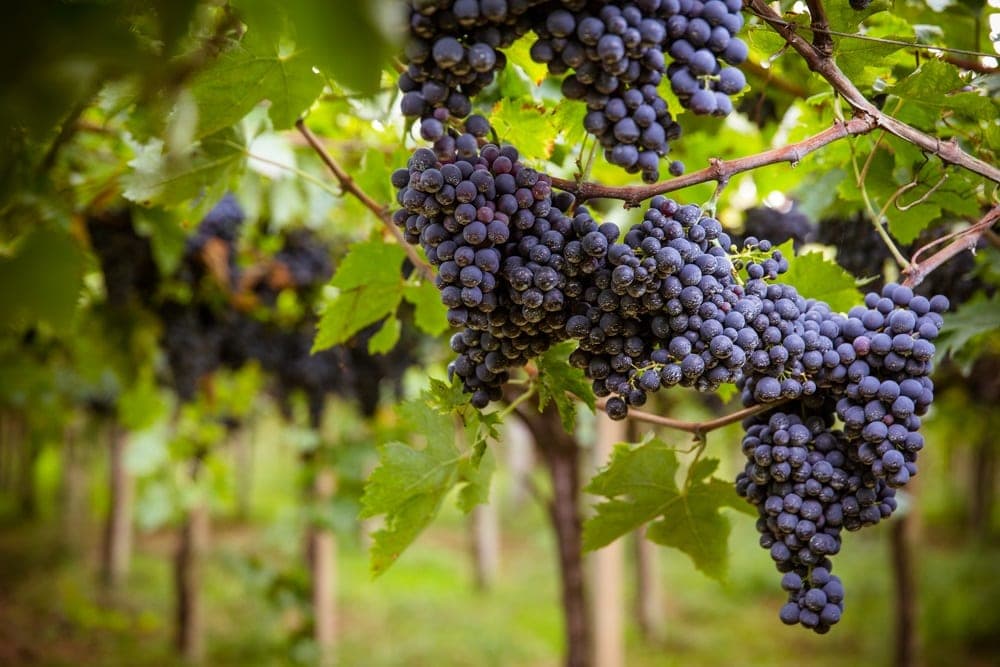
The best value Montepulciano d'Abruzzo Wines
The following list features Montepulciano d'Abruzzo wines that we found to have the best price-quality ratio. These wines have been included in the Berebene 2025 and Vini d'Italia 2025 guides by Gambero Rosso. They are available in wine shops or online for under 20 euros.
One standout for its excellent price-quality ratio is the fragrant and juicy Le Murate '22, which offers well-balanced tannins and good progression. Siblings Alessandro and Elena Nicodemi have taken over the legacy of their father Bruno, who started wine production in the late 1990s. Their vineyards, cultivated organically, are set against the backdrop of the gentle Teramo Hills.
In the inland area of Città Sant'Angelo, on the Pescara Hills, Mario and Giovanni D'Alesio revived their grandfather Mario’s agricultural legacy in 2007. Their production is divided into three lines: "D'Alesio," "Tenuta del Professore," and "Sciarr." From the latter, we chose a Montepulciano blending ripe black fruits and graphite, with a dense tannic structure and a rich, voluminous palate.
An excellent young Montepulciano is Riparosso '23 from Dino Illuminati. It bursts with fresh black fruit aromas—blueberry and plum—offering a juicy and fleshy palate that is very enjoyable. Founded over a century ago as Fattoria Nico by Nicola Illuminati, the winery was modernised by his grandson Dino in the 1950s. Today, Dino’s sons Lorenzo and Stefano run this historic estate, a key player in Controguerra and the Teramo Hills.
The Riserva '20 from Contesa needs some time to breathe and interact with oxygen. It reveals black cherry, liquorice, and sweet tobacco notes, leading to a structured, tannic palate with a savoury undertone. Rocco Pasetti, the current owner, named the winery after a historical land dispute involving his great-grandfather. Located in Collecorvino, in the Terre dei Vestini subzone, the estate produces Montepulciano, Trebbiano, Pecorino, and Passerina wines using a mix of stainless steel, barriques, and large barrels.
Mo Riserva '20 is a Montepulciano that, despite being produced in large quantities, maintains impressive quality. It opens with notes of medicinal herbs before shifting to chocolate and toasted wood, with mature blackberries and plums emerging in the bouquet. Its well-extracted tannins remain elegant and light. This is one of many standout wines from Cantina Tollo, a cooperative that is one of the most significant in central-southern Italy, managing 2,500 hectares and producing 18 million bottles annually.
Novaripa, a cooperative in Ripa Teatina founded in the late 1960s, has about 400 members cultivating 700 hectares of vineyards. Among its range, Sotto il Cielo di Novaripa Riserva '19 stands out for its fine aromatics, balanced taste progression, and savoury finish.
Natum '22 offers aromas of ripe cherry and plum, with a precise, fruit-driven palate, fine tannins, and a structured yet smooth sip. Agriverde, a pioneering organic winery in Ortona, was among the first in the region to obtain certification and adopt sustainable architecture.
The Feudi d'Albe '22 from Bove is a pure Montepulciano with herbal and ripe red fruit aromas. Initially sweet, it is balanced by dense, savoury tannins. Bove, a historic winery in Avezzano, manages 60 hectares focused on native Abruzzese varieties.
The Colline Teramane '22 from Terraviva combines classic graphite notes with fruity elements of plum and black cherry. Established in the 1970s and converted to organic farming in 2006, this winery is now a dynamic presence in the Teramo Hills.
Cocca di Casa '21 is excellent—an intensely coloured red, yet endowed with great freshness and progression. The Fontefico project, led by brothers Emanuele and Nicola Alteri, is proving to be a truly solid enterprise. They have taken over the reins of the family business, founded by their parents Miriam and Alessandro in 1996. The Punta Penna promontory is the nerve centre of this estate, where 15 hectares of vineyards, cultivated according to organic farming principles, are divided into four parcels: Vigna Bianca (home to Pecorino and Trebbiano), Vigna del Pozzo and Il Pàstino (planted with Montepulciano), and Le Coste (where Aglianico thrives).
The Montepulciano Spelt is a Riserva that opens with clear sensations of wild berries, blended with notes of cocoa beans and coffee powder. Hints of graphite and extinguished fireplace precede a palate with dense yet flavoursome tannins, perfectly extracted. The vineyards of La Valentina, owned by the Di Properzio brothers, encapsulate the two souls of Abruzzo wine: the Apennine and the Adriatic. Their plots are located in Spoltore and Cavaticchi, close to the coast, as well as in Scafa, San Valentino, and Alanno, further inland, in the heart of the Pescara Hills. From the very beginning of their venture in the 1990s, Sabatino, Roberto, and Andrea have worked with total respect for the land and nature. Their organic certification was followed by an increasingly firm commitment to the best practices of sustainable agriculture.
The Montepulciano '21 from Cingilia is excellent—a young winery, just like its owner, Fabio Di Donato, who started making wine about ten years ago, applying the knowledge he gained while earning his degree in Oenology. To do so, he relies on his small vineyard—six hectares—located near Cugnoli, in the Pescara Hills. In the cellar, the preferred approach is one of artisanal craftsmanship and spontaneous fermentations, resulting in a small range of wines rich in character and territorial identity.
The Montepulciano Baldovino '22 from Tenuta I Fauri is very good—juicy and lively. Valentina and Luigi Di Camillo are the driving forces behind this family-run winery, founded in the late 1970s by their father, Domenico. While Valentina focuses on promotion and hospitality at the new accommodation facility, Luigi is dedicated to transforming the harvest into expressive, territorial, and never banal wines. Their vineyard parcels, planted with native grape varieties, are located in the municipalities of Chieti, Francavilla al Mare, Miglianico, Villamagna, Bucchianico, and Ari, all cultivated organically.
The Montepulciano '22 from the Le Stagioni del Vino line, presented by the Spinelli winery, is also very good. Founded by Vincenzo in 1973, this brand remains one of the most internationally recognised from Abruzzo. However, whereas export once accounted for the majority of production, in recent years, the new generations at the helm of the business have increasingly focused their efforts on the domestic market. In addition to their own vineyards, the company also sources grapes from trusted growers who are closely monitored agronomically throughout all vineyard operations.

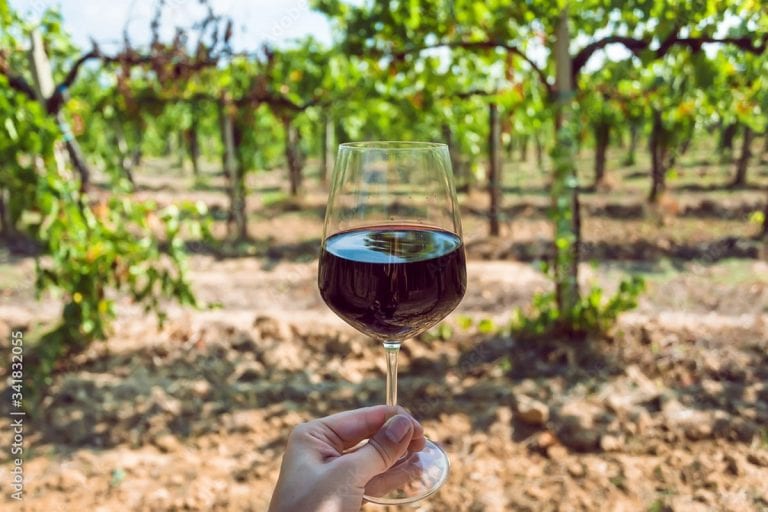
 "The universal wine glass? It doesn’t exist. Only shortcut-lovers believe in it." So says Maximilian Riedel
"The universal wine glass? It doesn’t exist. Only shortcut-lovers believe in it." So says Maximilian Riedel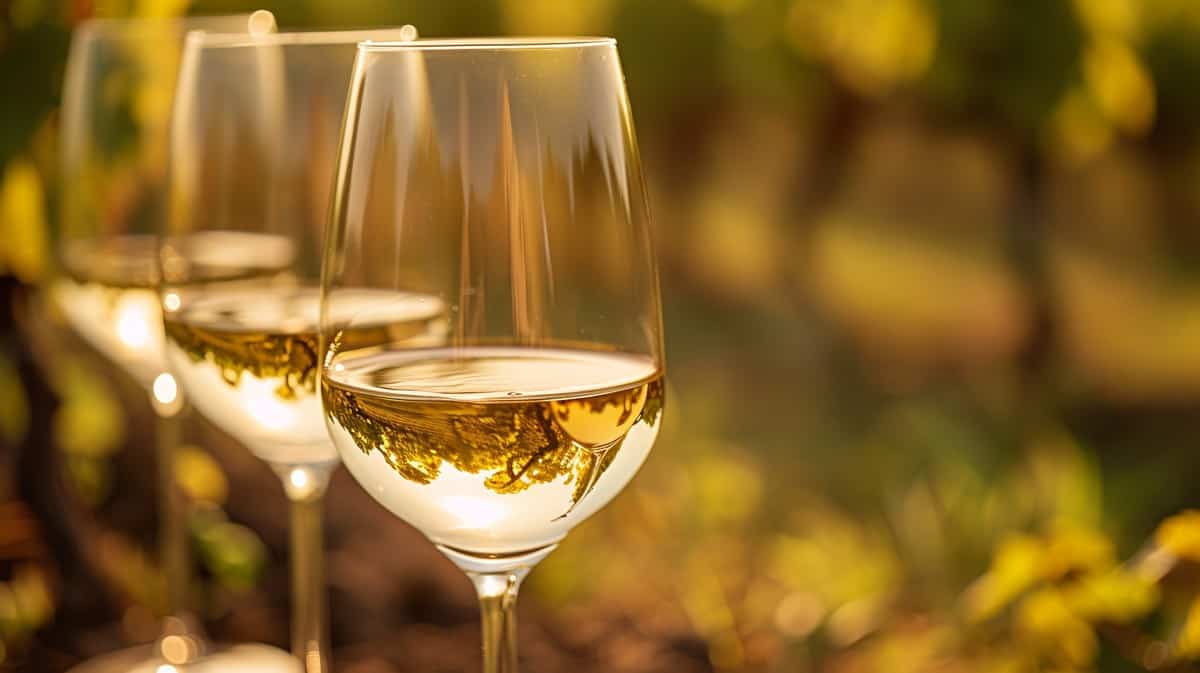 The 15 Ribolla Gialla wines with the best quality-price ratio chosen by Gambero Rosso
The 15 Ribolla Gialla wines with the best quality-price ratio chosen by Gambero Rosso A strong start for Italian wine exports in 2025. In January, the stockpiling effect in the US ahead of tariffs proves decisive
A strong start for Italian wine exports in 2025. In January, the stockpiling effect in the US ahead of tariffs proves decisive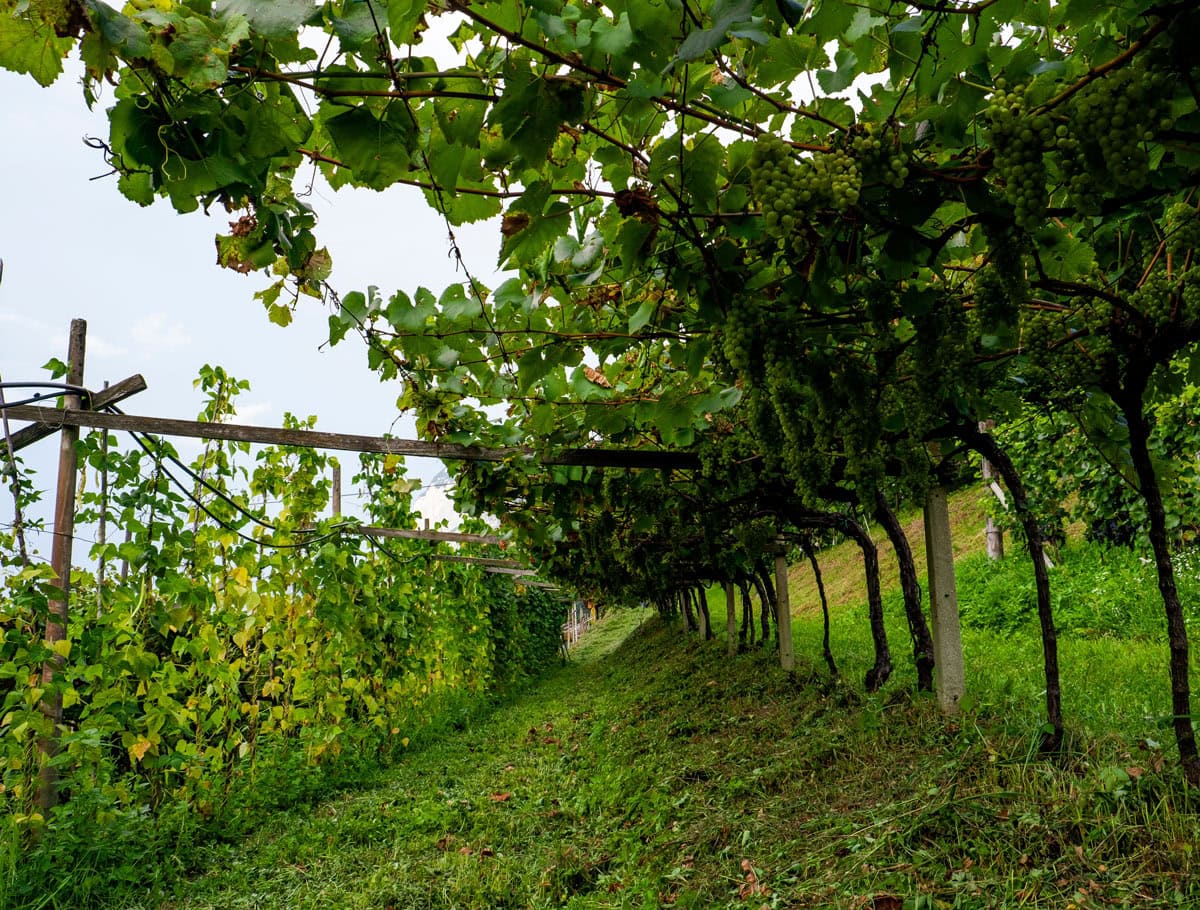 The leap in quality of the new Piwi wines across 15 labels
The leap in quality of the new Piwi wines across 15 labels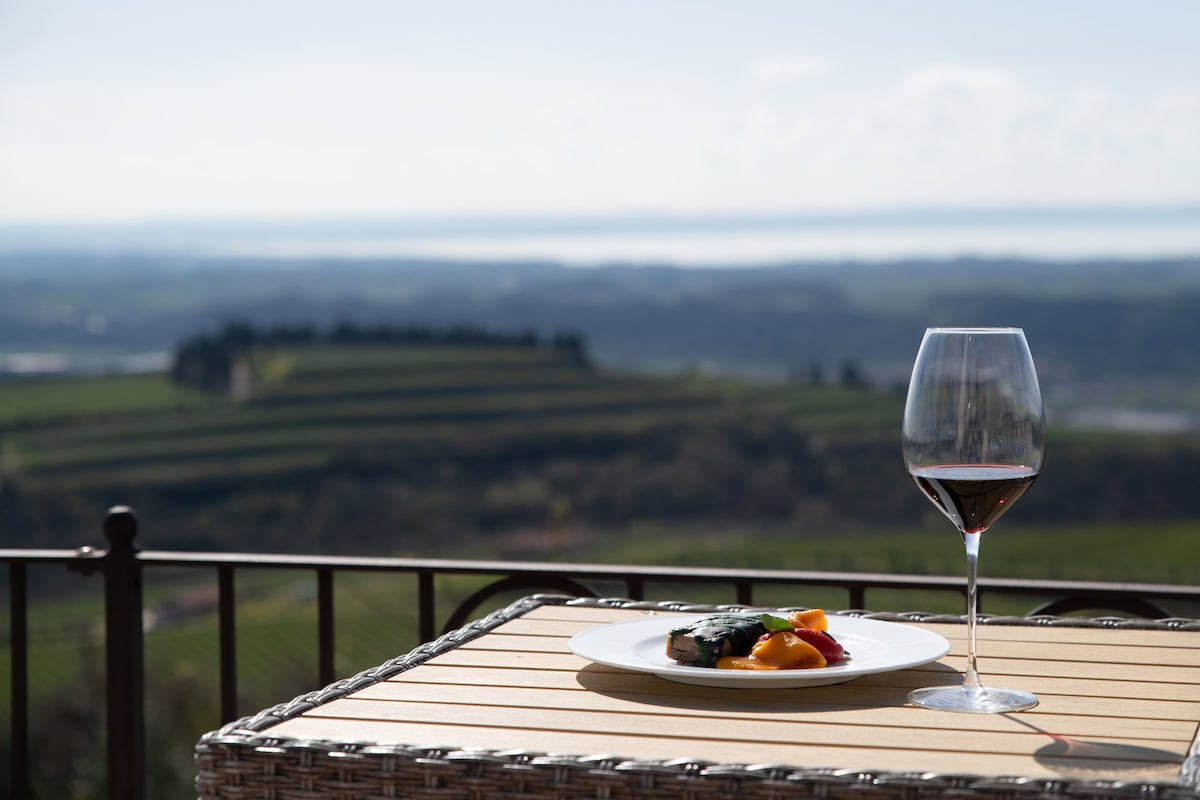 Valpolicella welcomes back one of its most iconic wines: rebellious yet loyal, Grola returns to the DOC
Valpolicella welcomes back one of its most iconic wines: rebellious yet loyal, Grola returns to the DOC